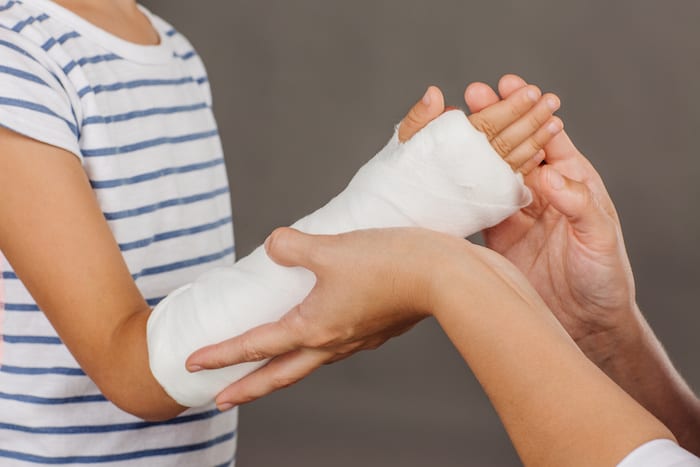With summer in full swing, we have the opportunity to spend more time outdoors. Particularly with the kids out of school, they’re likely spending their free time playing sports, catching up with friends, and engaging in summertime activities. With this uptick in activity comes the possibility of injury, particularly bone fractures, in children. Most broken bones in kids are a result of falling, whether that’s falling off a bike, a horse, or even slipping while running or moving around the pool. If it’s your child’s first broken bone, they may not know how to react, leading to a delay in treatment. To ensure you’re getting your child the medical attention they need and promoting healthy bone repair and growth, we’re breaking down what to do if your child breaks a bone.
Signs the Bone Might be Broken
In our past blogs, we have discussed how tricky it can be to self-diagnose your own broken bone, but it can be even more challenging to diagnose a broken bone in your child. Some indications of a broken bone include hearing a cracking sound or a snap, but if you weren’t around your child at the time of the fracture, there’s no way of knowing how the fracture happened or how it sounded. Fortunately, there are other signs to look for that would indicate a broken bone. Some of these signs include:
- Bruising, discoloration, or swelling
- Crookedness or deformation
- The inability or unwillingness to move or put weight on the injured area
If you can identify any of these signs in your child, seek medical attention immediately. Leaving a broken bone untreated can lead to the bone healing incorrectly, which can leave your child with mobility problems down the line. Keep in mind that an injury that doesn’t immediately look like a fracture may end up being a broken bone. In some cases, your child may still be able to use the injured area immediately after the break, or the swelling may not take place until a couple of hours after the initial injury. If your child is still reporting pain after several hours, it’s a good idea to get the injury checked out just in case.
What to Do If Your Child Breaks a Bone
After you’ve suspected your child has broken a bone, head straight to the emergency room. You can make the trip more comfortable by propping up the injured area with a towel or pillow and using an ice pack to reduce swelling. If the fracture is more severe, resulting in your child being in too much pain to move, or if the broken bone protrudes from the skin, it’s better to call an ambulance rather than drive your child to the hospital yourself. Moving your child in the event of a severe fracture may make the injury worse.
Follow-Up Care
In addition to the cast, splint, or other treatment ordered by a doctor, there are additional steps you can take to promote recovery. Ensuring that your child receives a nutritious diet with calcium and vitamin D can help support healthy bone development. It’s also essential that you go to all necessary follow-up appointments to avoid growth-plate fracture, a condition more common in children that occurs when the layer of growing soft tissue is damaged. For any complications with fractures or any questions about bone care, call Paris Orthopedics. Fracture care is one of our specialties, and one of our expert providers will be sure to give you and your child the highest quality of care.
Consult an Orthopedic Specialist
The team at Paris Orthopedics and Sports Medicine is dedicated to helping our patients recover from a wide range of orthopedic conditions. Our services include general orthopedic medicine, joint replacement, sports injury treatment, and osteoporosis treatments at our bone health clinic. If you have questions about the broken bones or bone health, call (903) 737-0000 to make an appointment.



